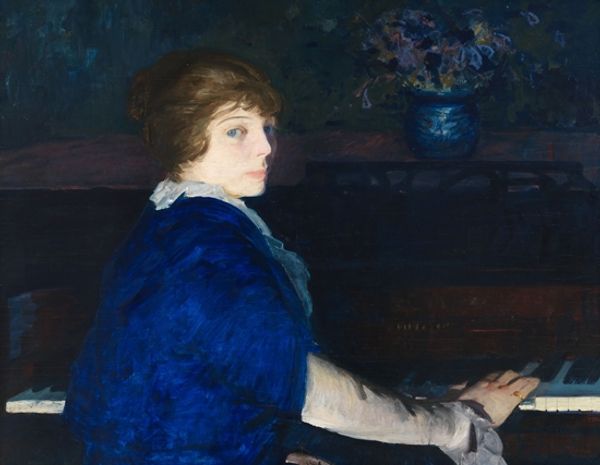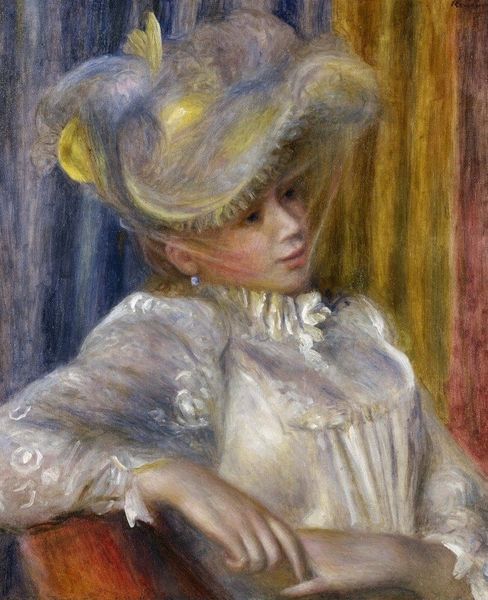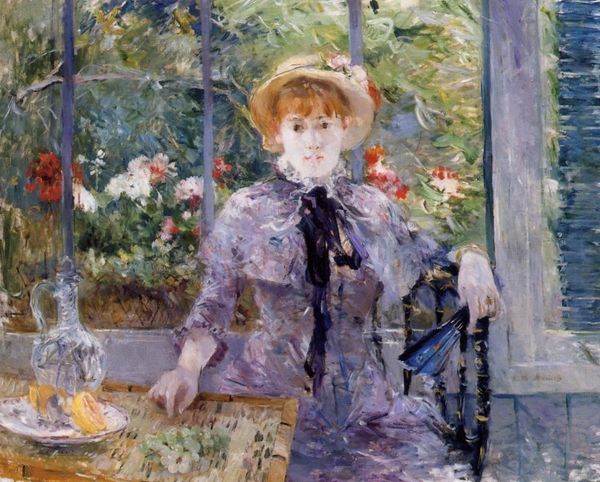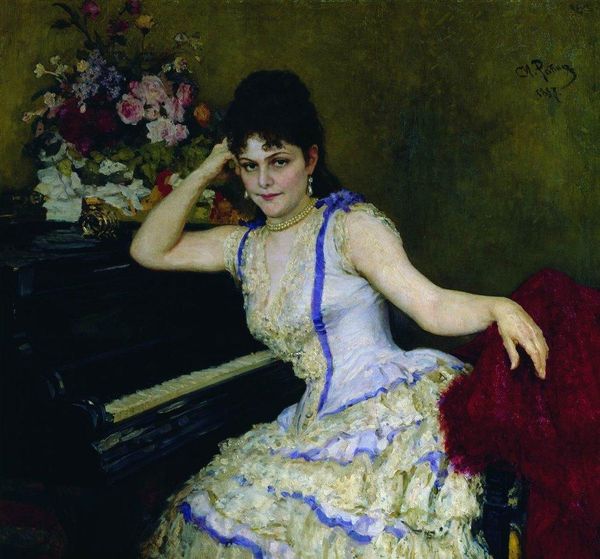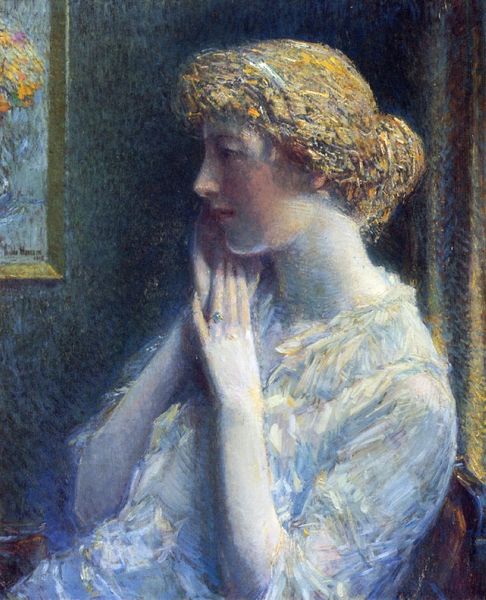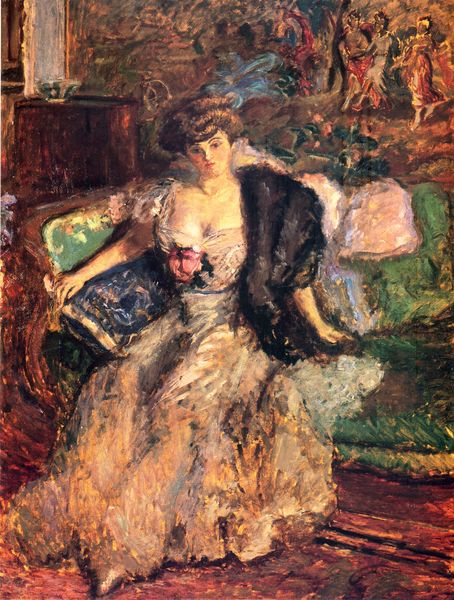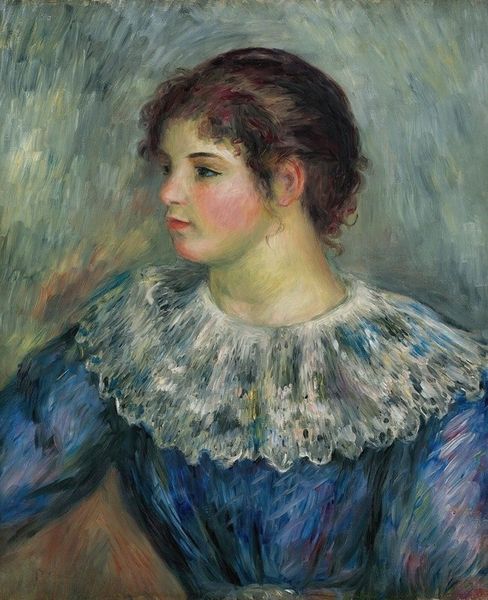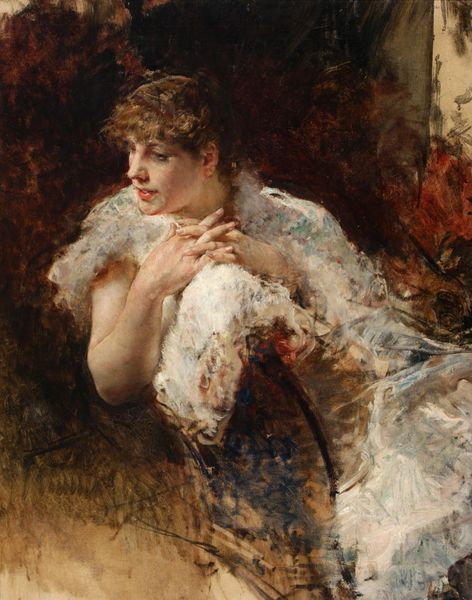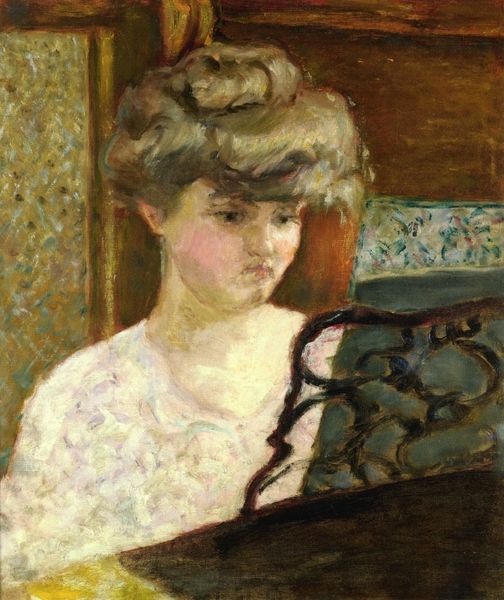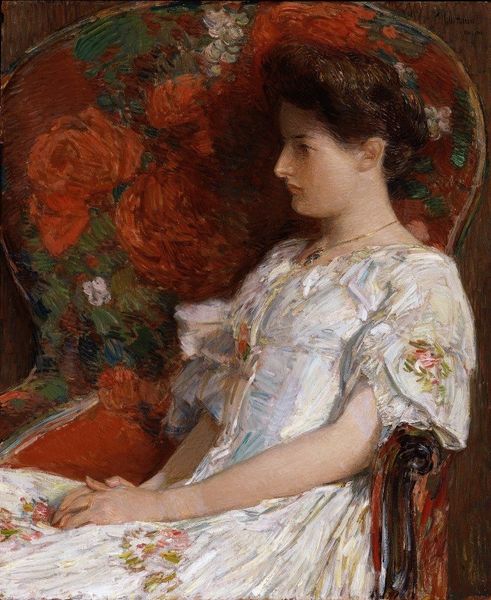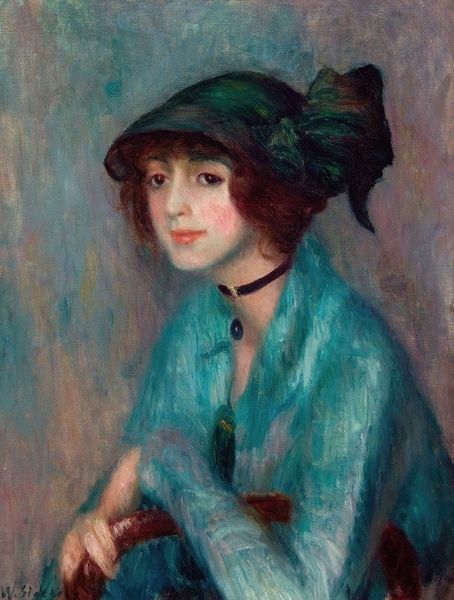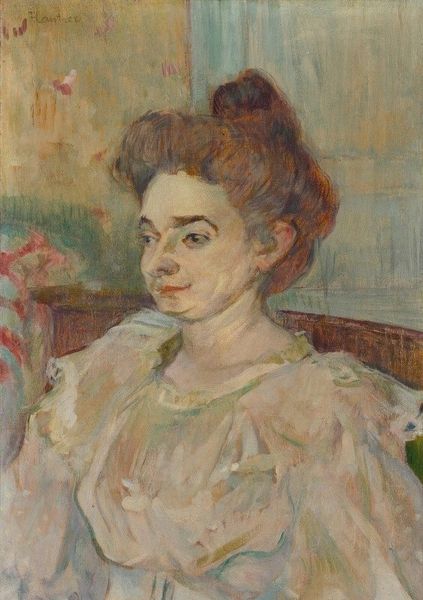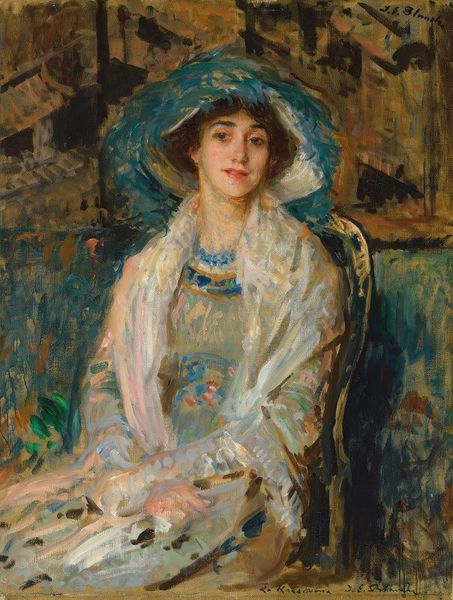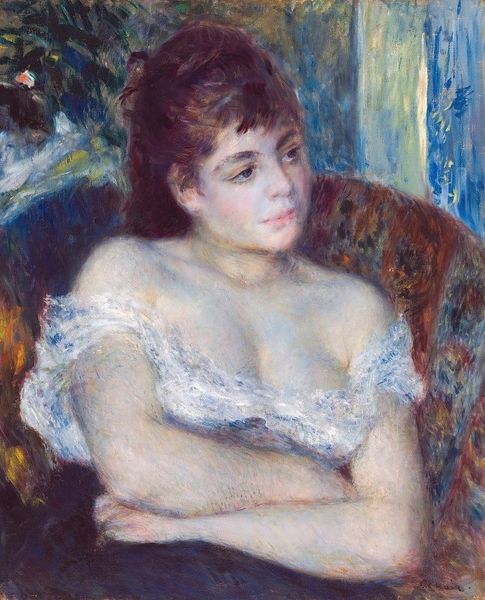
painting, oil-paint, impasto
#
portrait
#
figurative
#
painting
#
impressionism
#
impressionist painting style
#
oil-paint
#
figuration
#
oil painting
#
impasto
#
painterly
#
genre-painting
#
post-impressionism
Copyright: Public Domain: Artvee
Curator: Henri de Toulouse-Lautrec’s "Madame Marthe X\u2015Bordeaux," an oil painting, depicts a woman seated, her attention absorbed by what appears to be a letter or pamphlet. Editor: The immediate impression is one of interiority, almost a subdued drama conveyed through the muted greens and the figure's contemplative pose. I'm struck by the loose brushwork. Curator: Indeed, the loose handling of the oil paint, typical of Post-Impressionism, lends a certain informality, despite the rather conventional subject of a seated portrait. It offers an intimate, rather unvarnished view. What symbolic readings come to mind given this seemingly private moment? Editor: Well, the letter, naturally, functions as a focal point. It invites speculation about the contents and its impact on the subject. Letters, traditionally, have symbolized communication, news, or even clandestine affairs depending on context. Curator: Perhaps it hints at the rapid social and cultural changes of the era, where literacy and correspondence became increasingly central to navigating modern life. Consider how letters are a medium to spread revolutionary ideals. And her distracted demeanor suggests a depth beneath the surface—a consciousness grappling with the external world intruding upon her private sphere. The vibrant hair and muted gown point toward a social role, a need for appearance even in seclusion. Editor: Agreed. The interplay of light across her face and dress provides structural dynamism to the composition, highlighting not only form, but also the contrasting texture of the fabric itself, all suggesting the complex nature of social role, material, and consciousness. It isn’t so much an attempt at exact mimetic representation as it is capturing the ephemeral effect of light and color upon the textures within the room. Curator: I'm compelled by the way Toulouse-Lautrec renders her slightly turned head, as though her attention is caught between the written word and something else beyond the frame—between the external world and the inner, subjective life. Her hairstyle is also arresting, like a statement even when she seems subdued. Editor: In the end, Lautrec captures not only a likeness but also a complex interplay of societal signifiers, personal introspection, and materiality through brush strokes. The semiotics of color and texture within the room create a psychological study rather than merely representing a person. Curator: Precisely, inviting us to contemplate the interplay between public presentation and private contemplation in a rapidly changing era. Editor: A truly complex and lasting contribution to genre painting from the period.
Comments
No comments
Be the first to comment and join the conversation on the ultimate creative platform.
